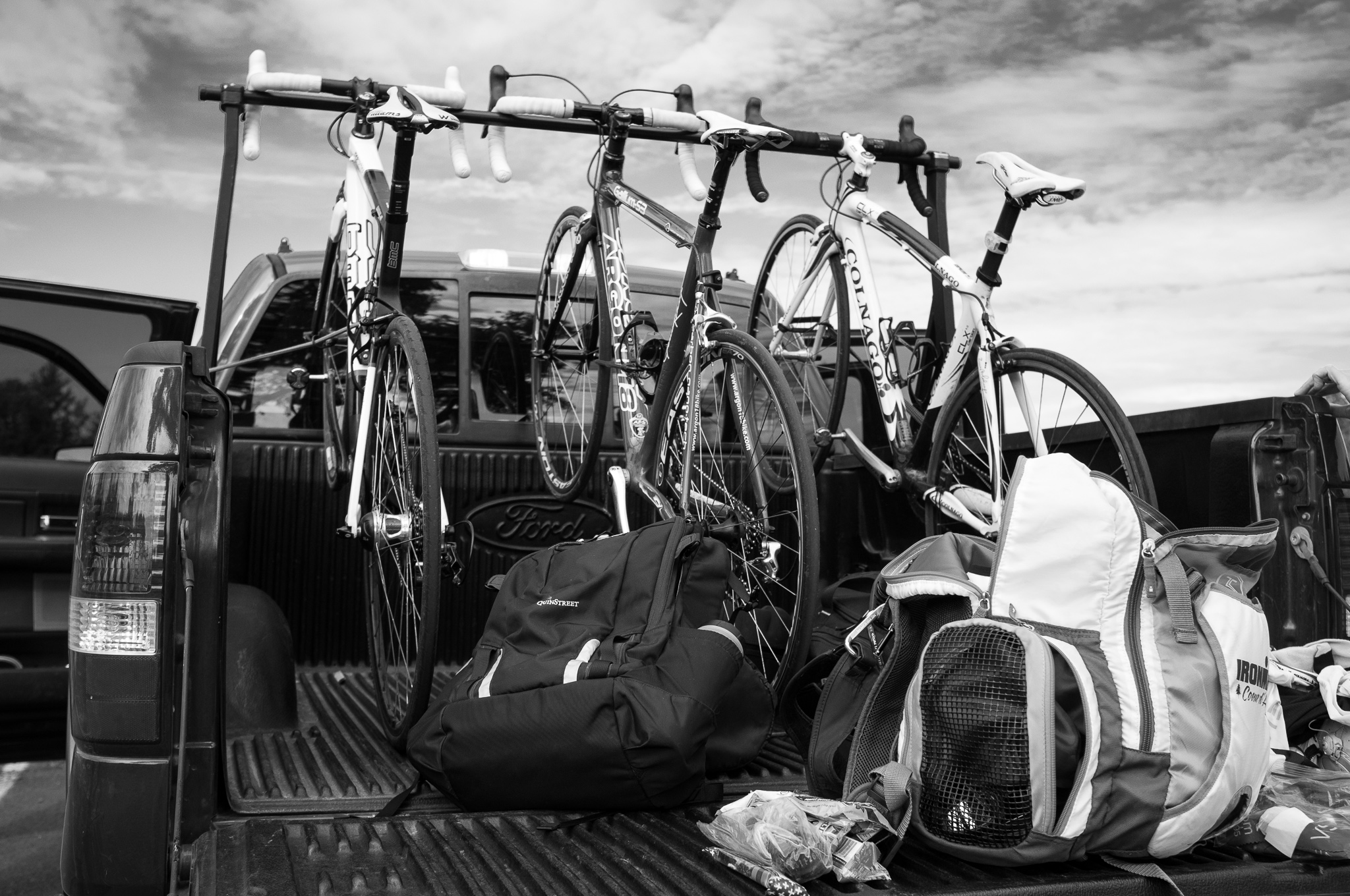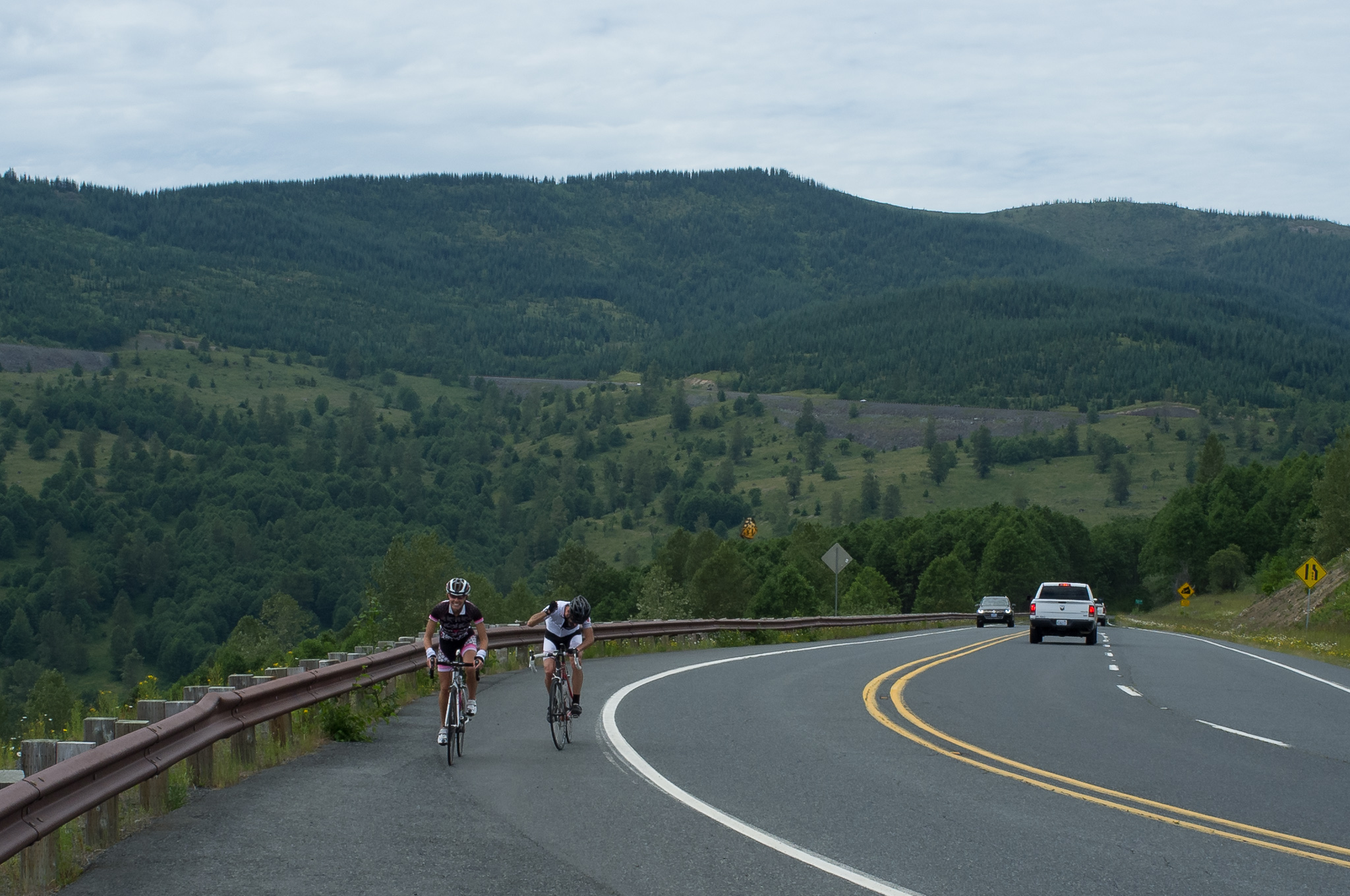Climbing Mount St. Helens

Over the 4th of July weekend a few of us decided that it would be a good idea to climb Mount St. Helens on our bikes. Well, we didn't actually ride up the volcano itself but rather to the Johnson Ridge Observatory, which sits at 4,314 ft and has a direct view into the volcanic crater. While this may have just been another training day for Anabel, who is at the peak of Ironman training, it was a big day for Mark and I.
Mount St. Helens in the distance.
Anabel holding court before showing us how to climb.
Pro tip, have someone provide sag support. While it's not critical, it was totally awesome to have my wife, Heather, drive up with us for moral support as well providing us with donuts, water refills, and some warmer clothes at the top as well as photos. With scenery this good it made it a little easier to convince her that hanging out with us on our all-day adventure was a good idea.
I know that people do this climb all the time but based on the looks that we got from the tourist crowd at the Observatory, they hadn't seen many bike "crazies" like us. We even got a standing ovation from a group of kids that saw us pull up.
The ride was pretty straightforward — if you like 40 miles of scenic roads, no stop signs, light traffic and 5,200 ft of total climbing. The way back is mostly downhill, with the exception of one little climb. The road is in perfect condition with a wide shoulder so you don't feel like the few cars out there are breathing down your neck. The average grade of the climb isn't too bad, which lets you also enjoy the scenery.
Definitive proof that sasquatch exists. Next: the chupacabra.
The ride starts off with some relatively flat roads through the Washington countryside, sasquatch territory, and tree farms before the road starts to tilt up. Even after the road turns up it is quite some time before Mount St. Helens makes an appearance. When the volcano does decide to make an appearance, it's pretty stunning to say the least. For the rest of the ride the volcano makes hide-and-seek appearances along with Mt. Rainier.
As you climb it's easy to see the damage from when the volcano blew on May 18, 1980. The mountain has a flat top with a crater in the side where tons of rocks blew out and leveled the majority of trees on the mountain. In addition, there is a huge river of silt and dirt that was caused by the flood flow from the eruption. It has been suggested that the total energy output from the eruption was the equivalent to 400 million tons of TNT — approximately 20,000 Hiroshima-size atomic bombs.
Click on the images below to expand the gallery.
Stunning views of the volcano and big sky.
I would highly recommend this ride to anyone. Getting out of the car allows you to get a different perspective of the entire mountain. Seeing the size of the mountain and devastation also helps to put the size and power of nature into perspective.










